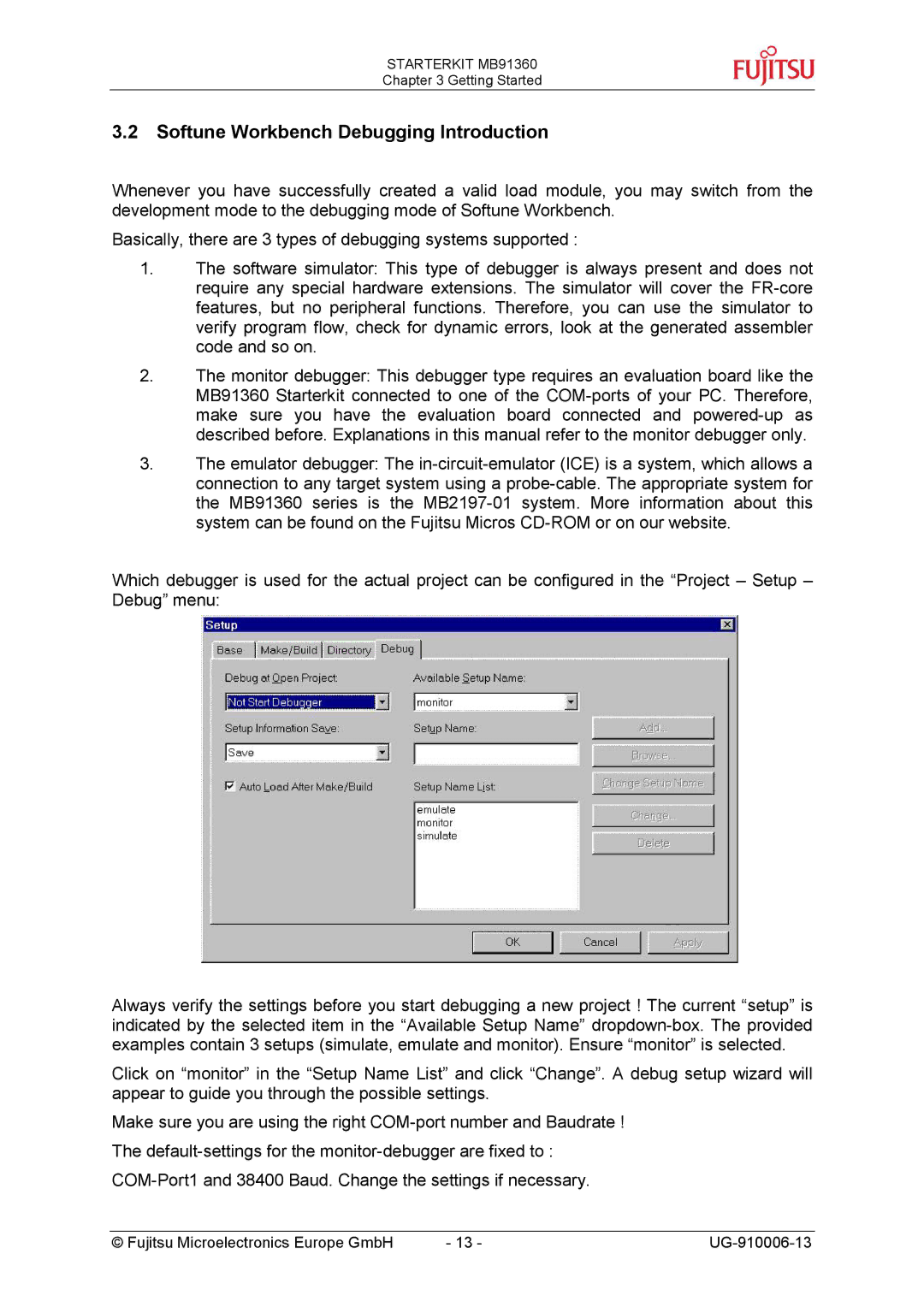
STARTERKIT MB91360
Chapter 3 Getting Started
3.2Softune Workbench Debugging Introduction
Whenever you have successfully created a valid load module, you may switch from the development mode to the debugging mode of Softune Workbench.
Basically, there are 3 types of debugging systems supported :
1.The software simulator: This type of debugger is always present and does not require any special hardware extensions. The simulator will cover the
2.The monitor debugger: This debugger type requires an evaluation board like the MB91360 Starterkit connected to one of the
3.The emulator debugger: The
Which debugger is used for the actual project can be configured in the “Project – Setup – Debug” menu:
Always verify the settings before you start debugging a new project ! The current “setup” is indicated by the selected item in the “Available Setup Name”
Click on “monitor” in the “Setup Name List” and click “Change”. A debug setup wizard will appear to guide you through the possible settings.
Make sure you are using the right
© Fujitsu Microelectronics Europe GmbH | - 13 - |
